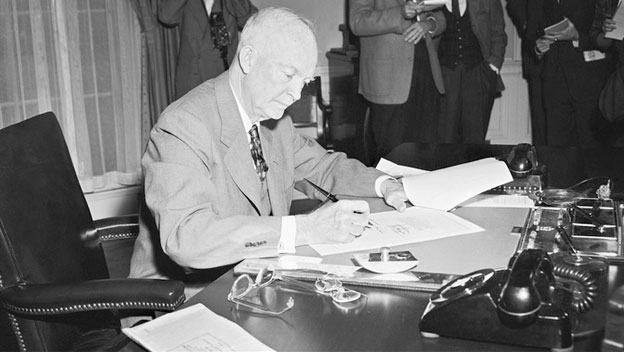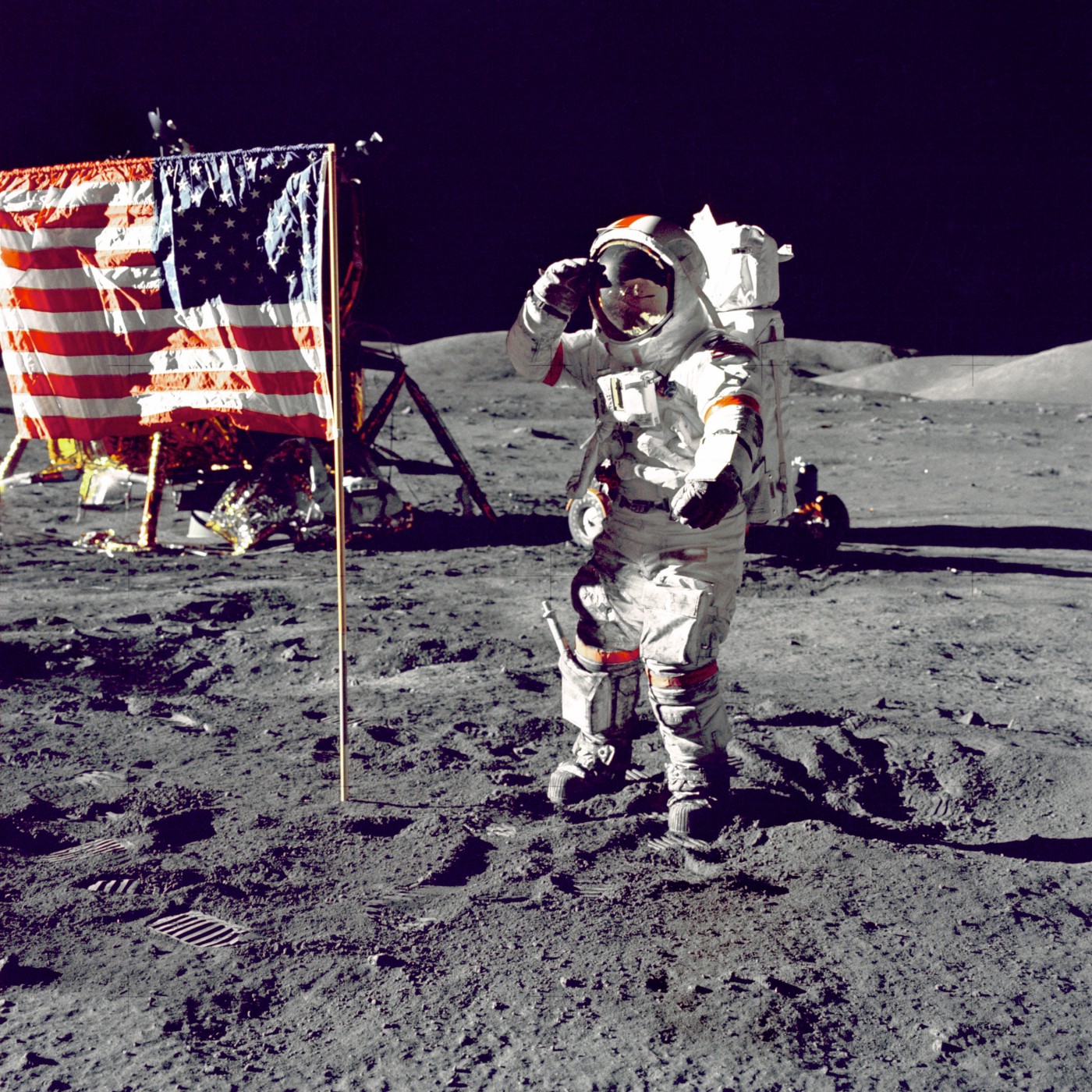Dalia Savy
Robby May
AP US History 🇺🇸
454 resourcesSee Units
Beginning of US-Israel Relations
In the Middle East, the U.S. tried to balance maintaining friendly relations with the oil-rich Arab states while at the same time supporting the new state of Israel. Israel was created in 1948 in the British mandate territory of Palestine. Israel’s neighbors, including Egypt, had fought unsuccessfully to prevent the Jewish state from being formed.
General Gamal Nasser of Egypt asked the U.S. for funds to build a dam on the Nile River, which the U.S. denied. In response, in 1956, he seized and nationalized the British and French-owned Suez Canal that passed through Egyptian territory. This threatened Western Europe’s supply line to Middle Eastern oil. In response, Britain, France, and Israel carried out a surprise attack against Egypt and retook the canal.

Image Courtesy of Britannica
Eisenhower was furious that he had been kept in the dark about the attack and sponsored a United Nations (UN) resolution condemning the invasion of Egypt. Under pressure from the U.S. and world public opinion, the invading forces withdrew.
Eisenhower Doctrine
In a policy announcement later known as the Eisenhower Doctrine, the U.S. pledged economic and military aid to any Middle Eastern country threatened by communism. This doctrine was announced by Eisenhower in 1957 and was intended to do what America has been doing since the Cold War: contain the spread of communism. Eisenhower first applied the doctrine by sending 14,000 marines to Lebanon to prevent a civil war between Christians and Muslims.

Image Courtesy of History.com
OPEC
In 1960, the Arab nations of Saudi Arabia, Kuwait, Iraq, and Iran joined Venezuela to form the Organization of Petroleum Exporting Countries (OPEC). Oil was becoming a growing foreign policy issue.
Its headquarters are in Vienna, Austria, and its primary objective is to "coordinate and unify the petroleum policies of its Member Countries and ensure the stabilization of oil markets in order to secure an efficient, economic and regular supply of petroleum to consumers, a steady income to producers and a fair return on capital for those investing in the petroleum industry."
Today, the member countries are Algeria, Angola, Gabon, Iran, Iraq, Kuwait, Libya, Congo, Equatorial Guinea, Nigeria, Saudi Arabia, United Arab Emirates, Venezuela, and Ecuador.
Military-Industrial Complex
In his farewell address as President, Eisenhower spoke out against the negative impact of the Cold War on U.S. society. He warned the nation to “guard against the acquisition of unwarranted influence…by the military-industrial complex.” Basically, the idea of the military-industrial complex is that all of the industries that produce military goods (planes, boats, weapons, etc.) continued to push the U.S. government and Department of Defense to take aggressive actions against the Soviet Union, so they could sell more of their product.
He urged the American people to be vigilant in ensuring that the complex did not gain too much power and influence over government policy and decision-making. He also called on citizens to ensure that the government's decisions on military and national security matters were based on the best interests of the nation and not on the interests of the military-industrial complex.
Sputnik
In 1957, the Soviet Union shocked the U.S. by launching the first satellites, Sputnik I and Sputnik II, into orbit around the Earth. Suddenly, the technological leadership of the U.S. was open to question. To add to American embarrassment, U.S. rockets designed to duplicate the Soviet achievement failed repeatedly.
In 1958, Congress responded with the National Defense and Education Act (NDEA), which authorized giving hundreds of millions in federal money to schools for math, science, and foreign language education. Additionally, it provided student loans to college students who were pursuing education in these fields. The Act also provided funding to schools and libraries to purchase educational materials, including books, and also provided scholarships for students in these fields.
Congress also created the National Aeronautics and Space Administration (NASA) to direct the U.S. efforts to build missiles and explore outer space. It was established by Eisenhower's National Aeronautics and Space Act.
The Space Race
In April 1961, the Soviet cosmonaut Yuri Gagarin became the first person to orbit Earth, traveling in a capsule-like spacecraft.
For the U.S. effort to send a man into space, dubbed Project Mercury, NASA engineers designed a smaller, cone-shaped capsule far lighter than the Russian one. They tested the craft with chimpanzees and held a final test flight in March 1961. On May 5, astronaut Alan Shepard became the first American in space (though not in orbit).
The Gemini program was then launched with the goal of learning about what happened to astronauts while in space and going outside of the aircraft. In February 1962, John Glenn became the first American to orbit Earth, and by the end of that year, the foundations of NASA’s lunar landing program–dubbed Project Apollo–were in place.
From 1961 to 1964, NASA’s budget was increased by almost 500 percent, and the lunar landing program eventually involved some 34,000 NASA employees and 375,000 employees of industrial and university contractors.
Apollo suffered a setback in January 1967, when three Apollo 1 astronauts were killed after their spacecraft caught fire during a launch simulation. December 1968 saw the launch of Apollo 8, the first manned space mission to orbit the moon.

Image Courtesy of Medium
On July 16, 1969, U.S. astronauts Neil Armstrong, Edwin “Buzz” Aldrin, and Michael Collins set off on the Apollo 11 space mission, the first lunar landing attempt. After landing successfully on July 20, Armstrong became the first man to walk on the moon’s surface. Television viewers around the world witnessed the astonishing sight of two American astronauts walking on the moon’s surface.
By landing on the moon, the United States effectively “won” the space race that had begun with Sputnik’s launch in 1957. There would be a total of 17 Apollo missions (supposed to be 20 but the budget was cut) with men returning to the moon multiple times.
Many remember Apollo 13, another crew that was supposed to make it to the moon, but had several catastrophic failures in space and still remarkably made it back to earth.
Camp David Accords
In 1978, President Carter invited Egyptian president Anwar Sadat and Israeli prime minister Menachem Begin to negotiate a peace treaty under his guidance at Camp David. They met for 13 days. They emerged with the Camp David Accords which was a framework for negotiations rather than a peace settlement. it called for a comprehensive peace between Israel and its Arab neighbors, self-government for the Palestinian people, and an end to the state of war between Egypt and Israel.
They paved the way for a 1979 treaty between the two nations which provided for the gradual return of the Sinai to Egypt but left the fate of the Palestinians, the Arab inhabitants of the West Bank and the Gaza Strip, unsettled. This is why this remains a major issue in the modern ongoing Israeli-Palestinian conflict. On the other hand, Egypt became the first Arab nation to recognize the nation of Israel.
Iran Hostage Crisis
Any sense of peace in the Middle East was offset in 1979 with the Iranian Revolution. Under Nixon and Kissinger, the U.S. had come to depend heavily on the Shah for the defense of the Persian Gulf. Carter continued this relationship despite signs of domestic discontent with his leadership.
Exiled Iranian leader Ayatollah Khomeini led a fundamentalist revolt against the Shah, who was forced to flee the country. Carter permitted the Shah to enter the U.S. for medical treatment. Irate mobs in Iran denounced the U.S., seized the U.S. embassy in Tehran, and took 53 American diplomats and citizens prisoner.
The Iranian hostage crisis revealed the extent to which American power had declined in the 70s. In 1980, the President authorized a desperate rescue mission that ended in failure when several helicopters broke down in the Iranian desert. The crisis dragged on for months and was a symbol of American weakness.
In a massive embarrassment for Carter, the hostages were not released until the day of Reagan’s inauguration. In total, the hostages were held for 444 days and they were released after the signing of the Algiers Accords.
Browse Study Guides By Unit
🌽Unit 1 – Interactions North America, 1491-1607
🦃Unit 2 – Colonial Society, 1607-1754
🔫Unit 3 – Conflict & American Independence, 1754-1800
🐎Unit 4 – American Expansion, 1800-1848
💣Unit 5 – Civil War & Reconstruction, 1848-1877
🚂Unit 6 – Industrialization & the Gilded Age, 1865-1898
🌎Unit 7 – Conflict in the Early 20th Century, 1890-1945
🥶Unit 8 – The Postwar Period & Cold War, 1945-1980
📲Unit 9 – Entering Into the 21st Century, 1980-Present
📚Study Tools
🤔Exam Skills
👉🏼Subject Guides
📚AMSCO Notes

Fiveable
Resources
© 2025 Fiveable Inc. All rights reserved.